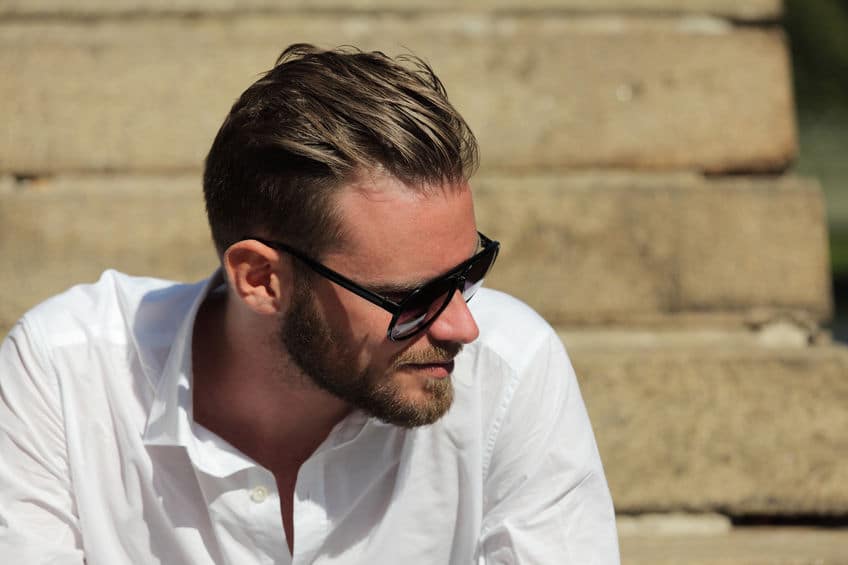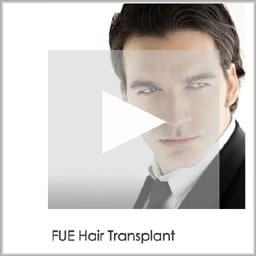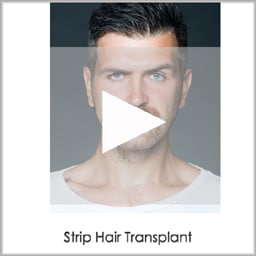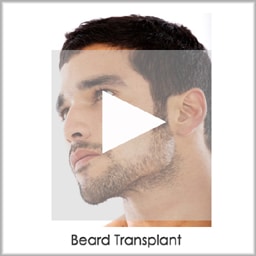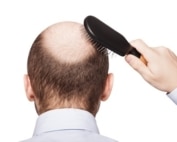Beard Transplant San Diego
Beard transplants are one of our fastest growing procedures at Kolstad Hair Restoration. Full, uniform and thick beards are now an option for everyone through a surgical procedure than can be performed in the office.
Thickness and distribution of facial hair tends to follow a specific genetic pattern. How thick and where facial hair grows does not change significantly after adolescence. Androgenic alopecia which is the most common cause of baldness in men does not affect facial hair.
Many of our patients feel that facial hair creates a strong, masculine appearance. A contoured beard can improve a jawline, separating the face from the neck. Side burns can make the temple hair appear thicker and more youthful. Whether your goal is to grow a full beard or to keep it trimmed as a thick shadow, facial hair transplants can give you opportunities that genetics did not provide.
The Most Common Questions We Get Asked About Beard Transplants
Who is a good candidate for a beard transplant?
The most important criteria for facial hair transplants is a good donor area. During beard transplant procedures hair follicles are borrowed from the back of the scalp. It is important to have a dense area of hairs in the occipital scalp to use for the transplant process. We offer two methods of removing hair grafts from the occipital scalp.
What is the best way to remove the donor hair grafts?
At Kolstad Hair Restoration in San Diego we offer both FUT and FUE beard transplants. The difference between the two procedures is how the hair grafts are removed from the back of the head. FUT refers to the process of removing a strip of scalp in the back to the head to obtain the grafts. Using state-of-the-art Neograft technology hair grafts can also be removed one at a time during an FUE procedure.
Dr. Kolstad will help guide you and explain the differences between FUT and FUE facial hair transplants. If you have long hair or have a strip scar from a previous procedure you may be a better candidate for FUT. If you do not have scars in the back of the head and like to wear your hair short, FUE may be the best method for graft extraction.
What type of facial hair transplants are available Kolstad Hair Restoration?
- Beard transplants
- Goatee transplants
- Sideburn transplants
- Mustache transplants
- Chin strap beard transplants
How many grafts are required for beard transplants?
The number of donor grafts required varies significantly from individual to individual. Full beard transplants can take 2,000 grafts to create. Adding fullness to areas of patchy thinning can require anywhere from 500 to 1,500 grafts. Goatees and mustache transplants typically require around 750 to 1,200 hair grafts.
Hair Transplant Services
On The Day Of Beard Transplant Surgery
On the day of your facial hair transplant you should plan for around four to six hours to complete the surgery. You will be awake throughout the procedure.
The process begins with Dr. Kolstad marking your facial hair indicating the placement and orientation the grafts will be placed. You will have a chance to review the markings to confirm the direction and orientation.
The donor site area on the back of the scalp is trimmed very close to the skin. Depending on your preference and the number of grafts required, the donor hair will be removed using the FUT or FUE techniques.
Dr. Kolstad will numb the back of your head to make sure you in not in discomfort for the extraction. For FUE procedures Neograft technology will be used to remove hair follicles one at a time. The graft extraction process can take 2-4 hours to complete. The most common feedback we receive is that laying prone (on your stomach) for a long duration can become tiring. You are able to get up, stretch, go to the bathroom and otherwise move around at anytime during the day.
After the grafts are removed most patients take a brake for lunch. Dr. Kolstad inspects the hair grafts to make sure they meet the required criteria for insertion. Damaged or poor quality grafts are discarded.
Small needles are used to create insertion points in the facial skin. The needle is beveled in the same orientation of the surrounding hairs to ensure parallel hair shaft growth. One at a time the hair grafts are placed into the facial skin. The day is typically completed around 2 PM. A pressure dressing is placed over the donor site and the post-procedure instruction are reviewed.
Recovery
The extraction sites take about a week to heal. The facial hair grafts will have small scabbing present for about 7-10 days.
Dr. Kolstad removes the pressure dressing one or two days after the surgery. He will inspect the healing and review the after-care instructions. Out-of-town patients are recommended to spend at least one day in San Diego following their procedure before departing on a flight home. Most of our patients take a week off of work to recover from the procedure for cosmetic reasons.
Additional San Diego Hair Transplant Information
Beard Transplant in San Diego From A Board Certified Facial Plastic Surgeon
Schedule A Consultation
To learn more about beard transplants in San Diego, California, contact us today at (858) 859-2563. We serve San Diego, CA, and the surrounding areas.
Read Our Blog on Hair Loss and Hair Transplant
Help! I had a bad hair transplant!
Hair plugs, hair rotation flaps, bad hairlines, bad strip scars, no results, no follow-ups, are just a few of the many things that can go wrong during hair transplant surgery. The most important question every potential patient needs to answer is who is performing the surgery. If you had a bad outcome after hair transplant [...]
How Long Do Hair Transplant Surgeries Take?
On the day of your hair restoration you should plan for six to eight hours to complete the surgery, typically from 7:30 AM to 5 PM. You will be awake throughout the procedure and Dr. Kolstad will prescribe Valium and oral pain medicines for comfort. The day begins by marking the areas where the grafts [...]
What Type of Hair Transplant Is Best For Me?
One of the most important aspects of hair transplant surgery is the technique used to obtain the donor grafts. Hair follicles are typically obtained from the back of the scalp using either a strip harvest technique (FUT) or as individual hair grafts (FUE). Strip harvesting is the process of removing a 2” x 12” section [...]
How Much Does A Hair Transplant Cost?
One of the first questions we get asked at Kolstad Hair Restoration is about the cost of a hair transplant. The procedure fees are calculated based on the type of transplant, the length of time required and complexity of the procedure. For men and women looking to treat androgenic alopecia our most common hair transplant [...]
How Can I Find the Best Hair Transplant Surgeon?
One of the most important aspects of hair restoration is choosing the right surgeon. With the greater acceptance of hair transplant surgery, finding a qualified provider is easier than ever. It is important to do your homework as choosing right surgeon can be as rewarding as choosing the wrong surgeon can be disastrous. An important [...]
What Are Hair Flaps?
The first procedures used to create a hairline were large rotational flaps. Lamont’s double temporoparietal flap, the occipital flap and the Juri flap represent historical attempts to cover areas of baldness using hair bearing scalp. Hair flaps created a very unnatural hairline and have little value when compared to state-of-the-art micrografting techniques. Hair flaps can lead [...]


